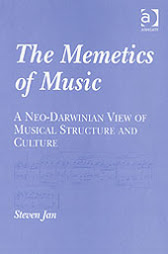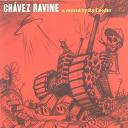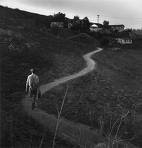The walls that surround us are alive. They live and breathe the life of the city, a constantly changing shimmer of creation that fills the space we inhabit.How often do you look up from your daily travels through your city, to lift your eyes from the repetition of the footpath and take a good hard look around yourself? For most people, not often enough! A simple movement can open up an entire new world of art, creative destruction, political commentary and the simple poetry of our everyday lives.
Street art takes all kinds of shapes and forms. From the traditional graffiti and its sibling, stencil art to posters, stickers, found objects, scribbled prose and more. Almost any artistic endeavour can become street art, and indeed, many things that may seem to lack artistic vision can be given a whole new life on the canvas of the street. Herein lies the beauty. It’s an art form that is not restricted by medium, form or message. Freedom at its very core. There’s an entire city waiting to be coloured and covered, and it’s accessible to everyone.
Influences on street art are as varied as the colours that cover the walls. Early NYC graffiti sparked an obsession with the aerosol can while political events and actions have inspired wheat-paste renegades to plaster their own messages over our streets long before this. The walls and surfaces that grew with our cities became an ideal canvas for anyone with a message and a can of paint, and people were quick to realise it. Graffiti exploded during the 80s while more ‘high-brow’ art that drew influence from the city and the streets began to gain recognition.The proliferation of advertising in the urban landscape has only fuelled the drive to mark territory and catch the eye of the casual observer with something more personal than the constant barrage of consumption that envelops the metropolis.
Banksy, Blek, Obey, Kinsey and countless others have spawned an army of eager artists, armed with cans and paste and anything else they can find, build, steal or buy. Anything that can leave a mark and break the silence of the walls around us. Stencil art has been etched into the minds of the public and the local copy-shop has become an armoury for wheat-pasters and sticker fiends. Billboards across every continent are no longer safe as political and social activists step up to the plate to re-word and re-write them with new messages. Culture jamming has spread like a virus and corporations are now victim to their own designs, twisted to mock and criticise.
There’s no solid reasoning behind the why and the where and the who of street art. Each artist holds their own views and personal motivations vary across the globe. If you look around the city though, it’s not hard to see where the inspiration springs from. For many it’s the tempting blank walls that cry out for life and colour, a kick of interest to make the most of their flat surface. For others, the need to scream their opinions and rage against the mass-culture and political entities that surround them becomes a driving force. Some see the streets as a public gallery and some see a perfect location to paint their name in massive letters for all to see.
There’s nothing like the rush of a spray-can in your hand at 3am, ears stretched for the noise of approaching traffic and eyes darting from wall to street, blinking at half-imagined movement in the shadows and straining to tell the difference between a taxi and a police car. The act of creation becomes an art within itself, focused not only on leaving a mark, but on the streets and alleyways that surround you. Through street art, an artist becomes a living and breathing element of the city. As much a part of its existence and evolution as the car parks and office blocks that define the walls of the concrete maze.
And when the sun drags its way above the horizon onto the stumbling morning-stunned hordes of workers and wanderers that fill the streets it also reveals a new skin. A burst of colour or an almost-dry poster slicked to the wall. Scrawled names and scribbled messages. One or two heads may turn and a smile may break out. Or maybe a snort of disgust from hundreds of passer-bys as a message is digested and discussed.
The canvas is a public one. The need for permission is ignored and space is reclaimed. The off-limits surfaces are visible for all to see and this fact is easily taken advantage of. There’s no exchange of cash or signed agreement to increase profit, only a direct feed to an open audience, whether they like it or not.
It’s this appeal that draws in many street artists. Stepping outside of the constricting laws of our society and ignoring them for a personal cause, or just a rush of adrenaline and a mark left to the elements. The walls themselves become ever-changing panels that weather and deteriorate with the days and nights. Nothing is permanent, covered by constantly stacking layers of paint and paper or washed away by vigilant council workers. This only serves to highlight the beauty of art on the streets. How long will it last and who will catch a glimpse of it before it disappears? Something you spot and admire one afternoon may be lost the next morning, gone and maybe forgotten, but soon to be replaced with another layer of creation in the depths of the night.
The view of street art as illegal vandalism is never too far away in the minds of too many people. The thought of a crisp and clean city, cling-wrapped and vacuum-packed to keep its shine often over-rides the beauty that is created as a city’s artistic skin evolves. More often than not art is cleaned from walls before it sees the light of the afternoon. It’s looked upon as destructive and anti-social, when in fact it generates a culture of its own and brings life to a city.
Street art acts as a social gauge, a meter of the life of a city’s underground. The heartbeat of those who don’t always follow the rules and live within the safer refines of ad-riddled buildings. Without the layers of art and flyers that can coat streetlights and power-poles, what sign is there of a city’s life beyond the faceless masses that stream between buildings? Culture is more than a public sculpture and a tourism brochure. It’s the passion that pushes outwards and seeks to fill the void around it. Street art gives this passion a physical form and takes it into the public arena where it belongs, to be observed or ignored as people see fit. When posters are torn down and paint is scrubbed from walls, the life of a city decreases. Streets littered with cigarette butts or discarded coffee cups become a measure of the activity that fills a city during the day. There’s no element of human existence reflected in a blank wall.
So step outside your comfort zone. Get away from the cramping of accepted art and grab the nearest paintbrush or permanent marker. Don’t let anything stop you. Swallow your nerves, keep your eyes open, and hit the streets. Everyone’s got a mark to leave, a message to spread, a story to tell. It may not seem important to anyone but you, but that’s all the more reason to yell it at innocent bystanders in bright red letters. It’s not difficult to buy a can of spray-paint and cut a stencil, or to cook a tub of wheat-paste and make a quick trip to your local copy-shop. The challenge comes in the execution, and the best way to learn is by doing. Start small and get bigger. Start big and get massive!
Street art is for the masses, and it’s by the masses. Join the movement or go it alone, just make sure you’re getting your hands dirty and your jeans covered in paint.
There’s an entire city out there waiting to be covered with whatever you want and every wall is a gallery.
Subscribe to:
Post Comments (Atom)



















































No comments:
Post a Comment